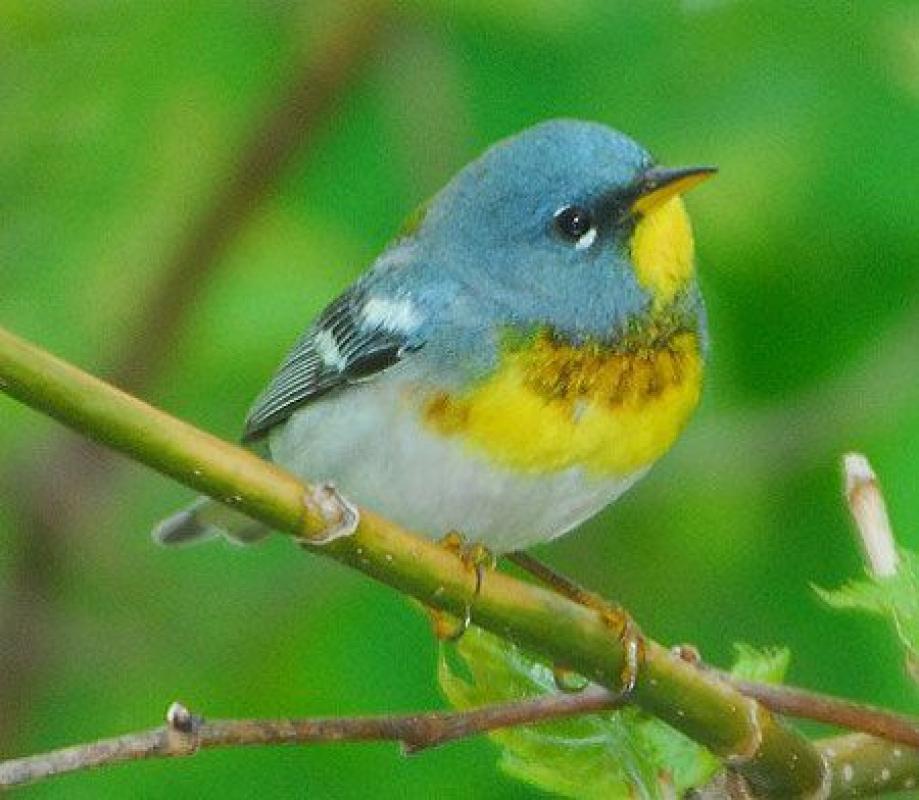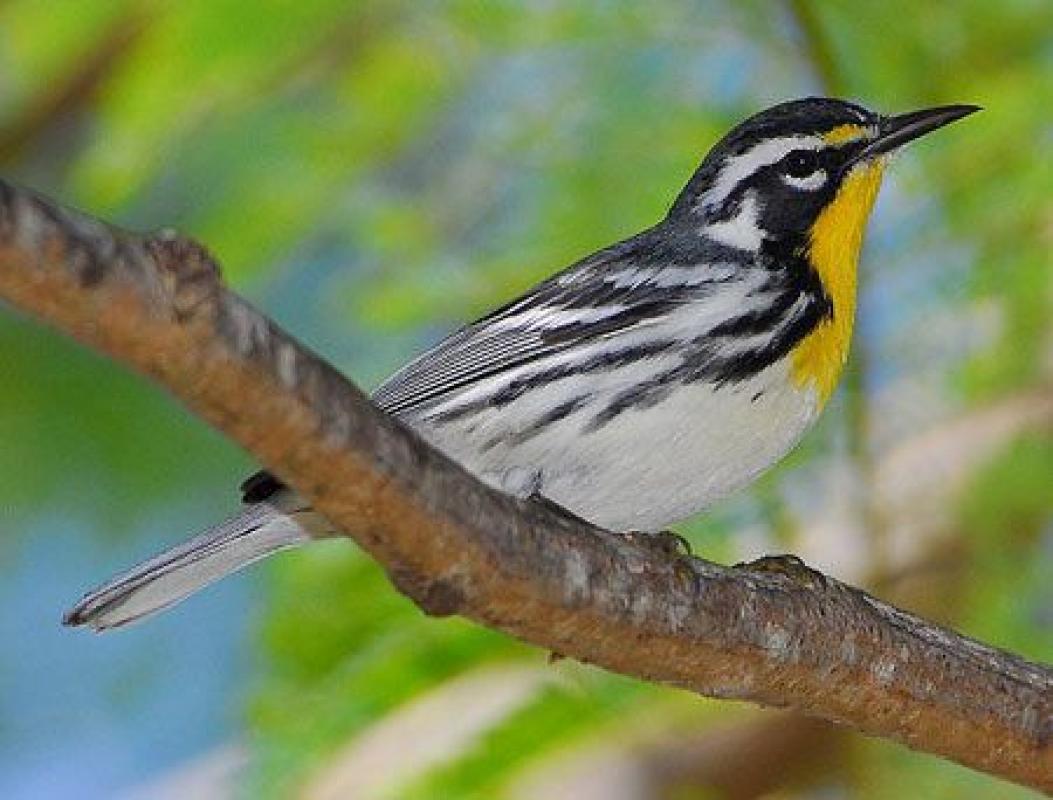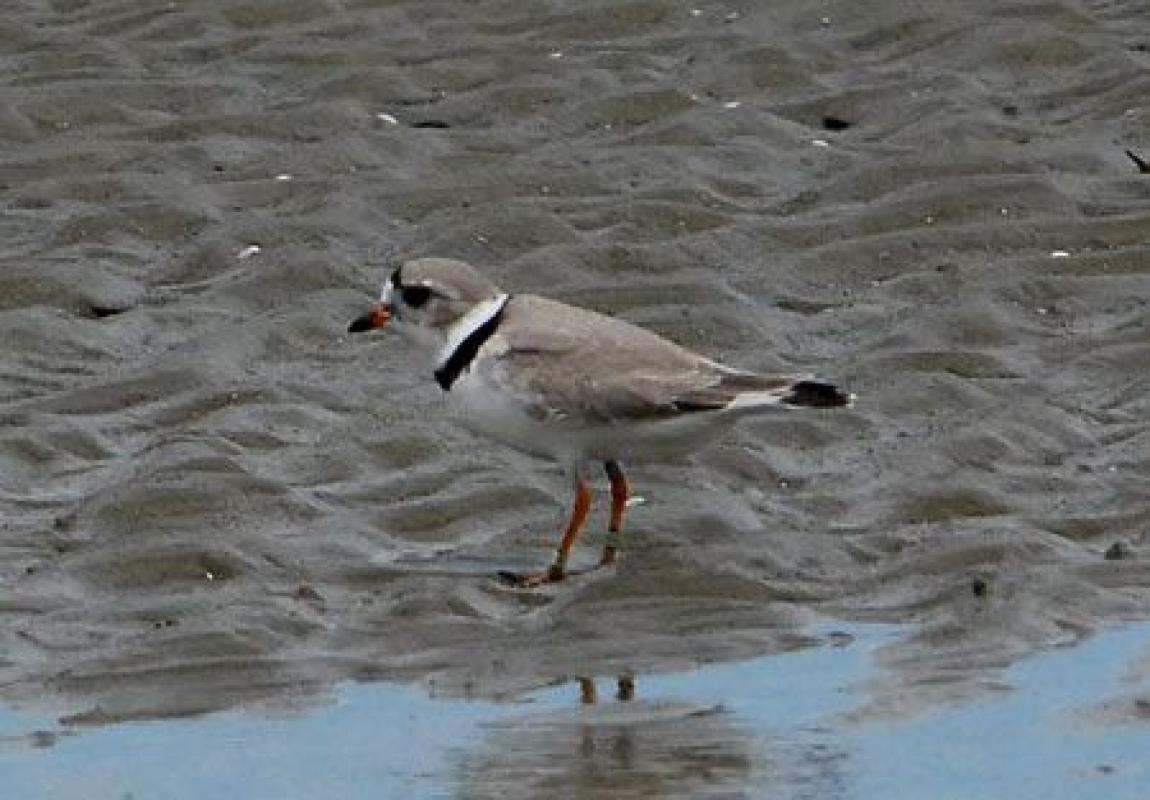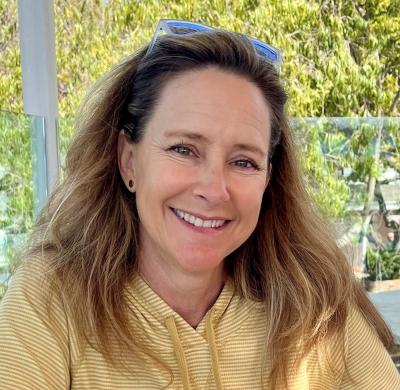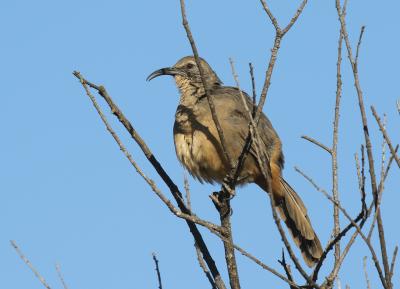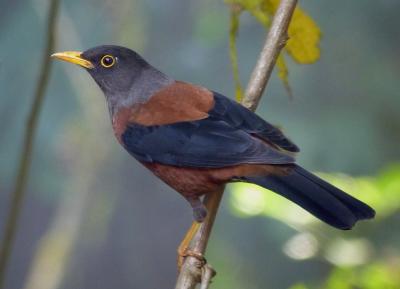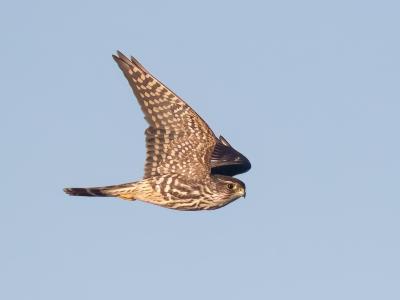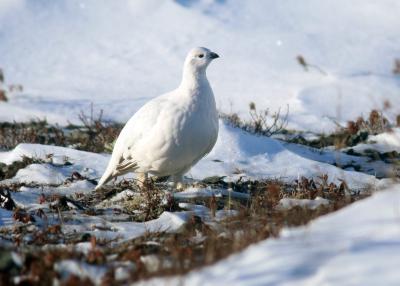Georgia and South Carolina
Birding the American Civil War: Savannah to Charleston
-
Apr 18-24, 2026
Jon Dunn
2026
Single Room Supplement $690
2026
Single Room Supplement $690
The old colonial towns of Savannah and Charleston are two of the most beautiful and historic cities in the Old South. Both figured prominently in the American Civil War, the latter at the start of the war and the former near the end. Both cities preserve important sites associated with the conflict. In addition both cities figured prominently during our American Revolution.
Both towns also have excellent birding close by. Our April visit is timed to coincide with the peak period of song for resident species and with the arrival of breeders. The wide variety of species we should see include the scarce and declining Bachman’s Sparrow, and there is a reasonable chance for the endangered Red-cockaded Woodpecker. The trees and wildflowers should be in full bloom, and April temperatures are ideal for birding and exploring the history of the Old South.
This tour is one in a series organized by Jon to explore the history and natural history of the sites associated with the American Civil War.
Day 1: The tour begins at 6:00 pm in Savannah, Georgia. Night near Savannah’s airport.
The tour was everything that I had expected. I can’t imagine a better leader than Jon with his great skill both locating birds by call and assisting everyone with their observations. His knowledge of the region’s history was outstanding and his discussions of historical activities were both interesting and entertaining. I was fully satisfied. -Evord K.
Day 2: This morning we’ll visit Tybee Island on the Georgia coast, where we should see a wide variety of waterbirds. Among the numerous shorebirds we’ll be looking for are specialties like American Oystercatcher and perhaps a lingering individual of the nominate subspecies of Piping Plover. Gulls, terns and Black Skimmers should also be numerous, and we stand a fair chance of finding a lingering Lesser Black-backed Gull. At nearby Fort Pulaski the open woods contain resident Brown-headed Nuthatches and Carolina Chickadees, and Painted Buntings breed here. Fort Pulaski, the site in January 1861 of the first offensive move by the Confederate Army, a move carried out without firing a shot. The following year the Union Army took it back and their use of rifled cannon forever rendered these types of fort obsolete. Night in Savannah’s historic district.
Day 3: This morning we’ll start at the Webb Wildlife Management Area in South Carolina, where we’ll search carefully for the endangered Red-cockaded Woodpecker, the declining nominate race of Bachman’s Sparrow, and Brown-headed Nuthatch, along with many other woodland species. Prothonotary, Pine, Prairie and Yellow-throated warblers, Painted Buntings and Blue Grosbeaks breed here and Barred Owl and both Red-headed and Pileated woodpeckers are resident. We will keep on the skies for Swallow-tailed and Swallow-tailed kites, both of which breed here and in the region. After lunch we will return to Savannah.
Savannah was the location for John Berendt’s famous book Midnight in the Garden of Good and Evil, which was made into a film. Historically, the city played an especially prominent role toward the end of the Civil War. Unlike many of the other towns in the swath of Sherman’s infamous “March to the Sea,” Savannah was surrendered peacefully several days after the surrender of Fort McAllister in mid-December 1864, a historic event often known as Sherman’s Christmas present to Lincoln. Because Savannah avoided being burned and plundered, parts of the old town still preserve their pre-war appearance. We’ll take a walking tour of the downtown district, where we’ll pass a number of famous houses, some of which belonged to some of the South’s best-known generals as well as the one which General Sherman stayed in for an extended visit before continuing the campaign on into South Carolina; we’ll spend the afternoon seeing these old homes, then dine in one of the many celebrated restaurants here in the city’s old section. Savanna’s history dates back to well before the American Civil War. It was founded by James Oglethorpe early in the 18th century and was a site of one of the Americans’ worst defeats in the Revolutionary War on 9 October 1779, this despite the American forces greatly outnumbering the British. During the baggle, Casmir Pulaski, the famous and beloved Polish cavalry officer, was mortally wounded. We’ll discuss that and the slave history, too, on the walking tour. Night in Savannah’s historic district.
Day 4: After breakfast we’ll cross into South Carolina to bird the famous Savannah National Wildlife Refuge. We should see Anhinga, a wide variety of herons possibly including American and especially Least Bitterns, Glossy and White Ibis, perhaps King Rail, and Sora; if conditions are right, we might also encounter a good variety of shorebirds. Passerines here could include such early-arriving breeders such as Eastern Kingbird, Orchard Oriole and Painted Bunting; migrants may include Palm Warble and perhaps early arriving Bobolinks. From here we will head up to large rookery preserve at the Port Royal Cypress Wetlands. Here Great and Snowy Egrets, Black-crowned and Yellow-crowned night herons, Little Blue and Green herons and Wood Storks along with a few Anhingas. A circling boardwalk enables us to get close views of the nesting birds. After lunch we will likely visit Bear Wildlife Management Area, a location that is often excellent for shorebirds and other water birds. Along the way we’ll again watch the skies carefully for Swallow-tailed and Mississippi Kites. From here we’ll continue to Charleston, where we’ll spend the next two nights in the historic district.
Day 5: This morning we’ll visit the famous I’on Swamp, another location where we might find Red-cockaded Woodpecker as well as a variety of other species including Prothonotary and Hooded Warblers, Summer Tanager, and possibly Kentucky and Swainson’s Warblers. This is also an evocative locale in which to contemplate the disappearance of Bachman’s Warbler, which was best known from this region many decades ago (into the 1940’s); the last credible records of this species came from the Charleston area over a half century ago in 1962.
Later in the afternoon we’ll take the short boat trip to Fort Sumter. The American Civil War began here, on April 12, 1861, when Confederate batteries around the bay ultimately induced the Union commander, Robert Anderson, to surrender the fort . Ironically, the only casualties came when the Union soldiers fired a final last salute before surrendering the fort. Later in the war (1863) Union ironclads reduced the fort to rubble, although the Confederates held the fort. The fort was rebuilt in a different style late in the 19th century when the Spanish American War was about to begin. From Fort Sumter we will be able to see Morris Island to the southeast where Fort Wagner was, a site where some 272 Black Union soldiers were killed in the failed Union assault on July 18, 1863 and memorialized in the film “Glory.” While birding here on our tour in 2024, there was a young male Common Eider at the pier, a rarity this far south. Gazing north from Fort Sumter we’ll be able to see Fort Moultrie. On 28 June 1776 the American forces held off a British fleet of nine men-of-war ships. The city eventually fell to Lord Cornwallis in 1780. A little more than a year later, Cornwallis would find himself trapped on the York Peninsula, Virginia and on 19 October 1781 was forced to surrender, a defeat which led the British to abandon to maintain America as part of the British Empire. Terms were eventually negotiated and the British left America at the end of 1783. Night in Charleston.
Day 6: This morning we’ll visit the north end of Folly Island, a good for migrant shorebirds. It also has nesting American Oystercatchers and Wilson’s Plovers and we will look carefully for them. On the walk we should see a few passerines, quite possibly including Painted Bunting. In 2022 we saw a Common Nighthawk.
Steeped in American history from colonial and Revolutionary War days through the Civil War, Charleston offers plenty to see. We’ll take a walking tour past beautifully restored antebellum houses, then visit the city’s southern end at the Battery to peer south toward Fort Sumter; several pairs of Yellow-crowned Night-Herons nest in the trees in the park. We’ll top the day off with dinner in one of the fine restaurants in the older, restored part of the city. Night in North Charleston near the airport.
Day 7: . There are many fine birding areas in close proximity to Charleston. This morning we will visit the Pitt Street Extension to check for migrant shorebirds. Clapper Rails are numerous here, and the very gray griseus subspecies of Marsh Wren nests here. We will also search for Seaside Sparrow. Here we will be looking down on the water birds and the light will be excellent, so we should enjoy great views. In our visits here Gull-billed Terns are quite accommodating hawking the flats looking for crabs. Purple Martins nest nearby. The tour concludes about noon at the Charleston airport, in time to catch mid-afternoon flights.
Note: The information presented here is an abbreviated version of our formal General Information for Tours to Georgia and South Carolina. Its purpose is solely to give readers a sense of what might be involved if they took this tour. Although we do our best to make sure that what follows here is completely accurate, it should not be used as a replacement for the formal document which will be sent to all tour registrants, and whose contents supersedes any information contained here.
ENTERING THE UNITED STATES: Non-U.S. citizens will need a valid passport and may need a tourist visa. Consult your nearest U.S. Embassy or consulate for details. Canadian citizens should carry proof of citizenship in the form of a passport or birth certificate.
PACE OF THE TOUR: Although there is one day with a somewhat long drive, this is a fairly relaxed tour. Most walking is done along roadsides or level trails, with the occasional trail in marshy grass. There are no particularly strenuous hikes on this tour, although some of the walks will be about two miles (round trip), all on level ground! Most days we depart around 6:00 or 7:00 AM and return by 5:00 PM. Much of our dining will be at established fine restaurants and some meals might take a bit longer than one experiences on most tours. Since we have two walking tours and a boat trip to Fort Sumter, along with dinner reservations, we will, at times need to keep to a schedule.
HEALTH: Birdwatching in coastal Georgia and South Carolina poses no real health hazards.
Smoking: Smoking is prohibited in the vehicles or when the group is gathered for meals, checklists, etc. If you are sharing a room with a nonsmoker, please do not smoke in the room. If you smoke in the field, do so well away and downwind from the group. If any location where the group is gathered has a stricter policy than the WINGS policy, that stricter policy will prevail.
Miscellaneous: The sun can be intense in April on the coast so bring sun hat, protective clothing and a strong sunscreen essential.
Chiggers and ticks are present in small numbers and mosquitoes might be present in some areas. Tiny sand fleas can be troublesome, though they are less obnoxious on cool, windy days; insect repellent can be helpful to ward-off these pests. We recommend bringing protective clothing and using insect repellents with a high concentration of DEET.
CLIMATE: Spring temperatures are in the 70s and 80s but near the coast a breeze tends to moderate the effect of the heat. Nights remain mild to warm. Scattered rain showers and thunderstorms, some with brief, heavy rain, are possible. If a cold front passes through it could be much cooler (lows in the 40’s, highs in the 60’s, and windy).
ACCOMMODATIONS: We stay in standard accommodations in the center of the cultural areas (where possible) throughout the course of the tour.
FOOD: Food is an element of this tour as we’ll be dining at a number of excellent restaurants in Savannah and Charleston.WINGS tours are all-inclusive, no refunds can be issued for any missed tour meals.
Food Allergies / Requirements: We cannot guarantee that all food allergies can be accommodated at every destination. Participants with significant food allergies or special dietary requirements should bring appropriate foods with them for those times when their needs cannot be met. Announced meal times are always approximate depending on how the day unfolds. Participants who need to eat according to a fixed schedule should bring supplemental food. Please contact the WINGS office if you have any questions.
TRANSPORTATION: We will be traveling in 12 or 15 passenger window vans or minivan, depending on the group size. Participants should be able and willing to ride in any seat in our tour vehicles.
2024 Narrative
IN BRIEF
Our birding and historical tour from Savannah to Charleston experienced perhaps the best weather I’ve experienced on this tour with no rain, little wind and neither heat nor cold. We tallied some 142 species including Clapper Rail, Swallow-tailed and Mississippi kites, Red-cockaded Woodpecker (endangered species), Bachman’s Sparrow, Painted Buntings, 11 species of Wood Warblers and close views of nesting herons and Wood Storks at a rookery in Port Royal. Rarities included a Common Eider at Fort Sumter and an American Golden-Plover at Bear Island WMA. We took informative walking tours with guides in both Savannah and Charleston admiring the architecture and learning about the history of both cities and what went on during both the American Revolution and the American Civil War for which both cities figured prominently. We also enjoyed a number of fine dinners in the historical districts of Savannah and Charleston.
IN DETAIL
Our tour started with a brief meeting in the lobby of our hotel and then dinner at nearby Sam Snead’s Oak Grill & Tavern. The next morning we packed up the van and headed down to the lighthouse beach on Tybee Island. Highlights were the shorebirds (mainly Sanderlings and Ruddy Turnstones) and the terns, mostly Royals, but some pairs of courting Sandwich Terns too, along with a few Forster’s and a large flock of 150 Black Skimmers. Overhead, flocks of northbound Double-crested Cormorants were passing through. A single Spotted Sandpiper was our only one of the tour. While on the beach a Merlin flew over and headed rapidly north and into South Carolina, and an adult male Painted Bunting was briefly seen. The oddest sight was a land-loving Eastern Box Turtle (nominate subspecies) which was heading across the sand to the ocean and actually went to the water’s edge! We had a delicious lunch at the nearby Deck Beach Bar and then visited Fort Pulaski. This fort was named after Casimir Pulaski, a Polish cavalry officer who came to America and trained the Continental soldiers in riding horses in combat. He’s considered the Father of the American Calvary. He was killed on 11 October 1779 in the battle of Savannah, a disaster for the Continentals. During the Civil War, the fort was easily taken by the Confederates in 1861. It was thought to be impregnable, but a year later and using rifled canon, The Union retook the fort. Rifled canon rendered these types of forts obsolete. They had been constructed at great cost by the United States over the previous several decades. While at the fort we noted Great Crested Flycatcher, White-eyed Vireo and Orchard Oriole along with two “Western” Palm, Pine warblers and a single Red-headed Woodpecker. A begging juvenile Bald Eagle was perched in the pines in the picnic area and adults were in the area as were Ospreys, including a nest. We then headed to the Savannah historical district where we had dinner at Churchill’s Pub and checked into our hotel for the next 2 nights.
On day 3, we headed north into South Carolina to James W. Web WMA., which offered perhaps the best birding of the tour. Highlights included good views of both Red-cockaded Woodpecker (an endangered species), including an active nest, and a Bachman’s Sparrow. Other species noted included a single Swallow-tailed Kite, a Yellow-throated Vireo, a half dozen Brown-headed Nuthatches along with “eastern” White-breasted Nuthatches, and a variety of nesting warblers including Prothonotary, Prairie, Pine, and Northern Parula. Chipping Sparrows were numerous and a pair of American Goldfinches were rather late. Red-headed and Red-bellied woodpeckers were numerous. Also notable was a Broadhead Skink. On the way out we admired an adult male Summer Tanager. Nearby we had good views of a singing Brown Thrasher and after grabbing a quick sandwich lunch at Subway, we noted several soaring Mississippi Kites nearby. Later in the afternoon we met Bonnie (of Bonnie Blue Tours) for a walking tour of historic Savannah. We saw many well-known sites and admired the beauty of a number of the wooded town squares. Birds of note included our only House Wren of the tour and several American Robins which nest in this historical district. Our tour ended at the Boar’s Head restaurant where we had dinner.
The next morning after packing up we headed across the Savannah River and into South Carolina to Savanah NWR. We spent a few hours birding this location where perhaps the main highlight were the bitterns, both a male Least and three American bitterns. They were seen very well with prolonged scope views. Other species noted included a late Hermit Thrush, some 50 Cedar Waxwings, Yellow-rumped (“Myrtle”) Warbler, Mottled Duck, Least Tern, Glossy Ibis, Northern Harrier, Solitary Sandpiper and two Wilson’s Snipes. A number of American Alligators were present too, some quite large! From Here we headed north and a little east to the heron rookery at Port Royal to the Cypress Wetlands. A circular boardwalk gave us excellent views of many nesting herons and Wood Storks. Many of the herons were in high alternate plumage with brightly colored soft parts (bill and lores). The nesting herons included Black-crowned and Yellow-crowned Night Herons along Tricolored, Green, and Little Blue herons, and Snowy and Great Egrets. Anhingas were present as were some 200 immature White Ibis foraging on the ground. We also had a chance to study the nominate subspecies of the Common Grackle, appropriately named the “Purple Grackle.” They were really quite purplish about the head and much of the body. Also well-seen was an adult Red-shouldered Hawk. After lunch nearby at Alvin Ord’s Sandwich Shop, we headed towards Charleston, but detoured south to look at Bear Island WMA. The water was low on the main pond and there were many shorebirds, mostly Dunlin and Least Sandpipers, but also some 20 Lesser Yellowlegs and about half as many Greater Yellowlegs which provided good comparisons. A single Semipalmated Sandpiper was studied with a scope. Several Black-bellied Plover were present along with Semipalmated Plovers. Most notable was a single American Golden-Plover, a rarity, particularly in spring. A single Bonaparte’s Gull was also seen along with a few Gull-billed Terns. Land birds included Eastern Kingbird and an extremely confiding Yellow-throated Warbler. We headed then to Charleston briefly noting a Swallow-tailed Kite along the way. After checking in, we dined at 39 Rue de Jean (French food) very close to our hotel.
On day 5 we visited the famous I’on Swamp to the northeast of Charleston. We noted a number of woodland species including Prothonotary, Black-and-white, Pine, Hooded, Yellow-rumped and Yellow-throated warblers, Great Crested Flycatchers, Pileated Woodpeckers, White-eyed and Red-eyed vireos, and Northern Parulas. Two Barred Owls and a Yellow-billed Cuckoo were heard. Palamades Swallowtails were numerous and were well seen. This location is best known as the last refuge for the Bachman’s Warbler, known here at least into the 1940’s. The last accepted record for the species was in 1962 near Charleston. The reasons for its extinction are not well-established. We head lunch at Subway and then caught the boat at Patriots Point for Fort Sumter. It was here in 1861 that the Civil War started on 12 April when the Confederates fired on the fort. The commander, Robert Anderson, surrendered the fort two days later, and they were allowed to return by boat to New York. The Civil War was on and it continued for the next four years with catastrophic results, although it did result in the end of slavery. The fort today looks little as it did in 1861. It was reduced to rubble by the Union Navy’s ironclads in the summer of 1863 and was later rebuilt in a different style prior to the Spanish American War. While up on the parapets we gazed off to the east to Morris Island where Battery Wagner once was and for which the movie “Glory” depicted the sacrifice of the colored regiment, the 54th Massachusetts, in the battle on the evening of 11 July 1863. The trip to Fort Sumter and on yielded few birds but at the fort a flock of Black Skimmers were present on a mudflat. A Mottled Duck that flew over seemed out of place. Particularly notable at Fort Sumter was an immature male Common Eider under the pier. This is well south of their normal range. That evening we walked to Stella’s, and enjoyed Greek food outside.
The next morning we drove south to the east end of Folly Island and walked to the east end. In the woods the no-see-ums were numerous and annoying but were thankfully absent when we reached the sandflats. Shorebirds were numerous and included many Dunlin and four briefly seen Red Knots. Willets included both “Eastern” (breeders) and “Western” Willets (non-breeders). A single Whimbrel and a full breeding plumaged Western Sandpiper were seen along two American Oystercatchers and 14 Wilson’s Plovers. Two Black Scoters (immature male and a female) also swam by. In the woods we noted several singing adult male Painted Buntings along with Great Crested Flycatcher, Gray Catbird and briefly, an Orange-crowned Warbler. We had leisurely lunch at nearby Chico Feo and then returned to Charleston, eventually parking at the our hotel’s parking garage and taking public transportation south down the island for our walking tour of Charleston with Bill Harris of Oyster Point Tours. Bill showed us much of the historical district there. Bill was from Virginia and freely shared his opinions about what the Civil War was about (slavery) and what he thought of Savannah, a friendly competition I concluded. Near the conclusion of the walk we left to make our dinner reservation at Eli’s Table where we had a very relaxed final dinner before returning to pick up our van and drive to our final nights lodging near the airport in Charleston.
On our final morning, after breakfast, we went to the Pitt Street Pier where we found a few new species, notably Marsh Wren, including a nest located by Adelle. These birds are the very grayish subspecies, griseus, which is in the “eastern” clade of the species, a likely split from the western clade of subspecies with very different songs. Shorebirds were numerous including 10 close Short-billed Dowitchers, five Willets (both “Eastern” and “Western”), 25 Ruddy Turnstones and ten Semipalmated Plovers. Two Western Cattle Egrets (split now from the Asian species, now known as Eastern Cattle Egret) were perched at close range and a half dozen Gull-billed Terns were foraging at close range looking for crabs on the mudflats. This species does not dive into the water as many terns do. Two Red-breasted Mergansers were also present along with a foraging Osprey that provided exceptional overhead views. We were unable to find Seaside Sparrow, but did see a Clapper Rail. In reviewing my photos of the dowitchers, I believe one might have been a Long-billed. Nearby we stopped to see a few Purple Martins which were nesting across the bridge. We returned to the hotel where most of the group was spending an extra night.
Overall it was a wonderful tour filled with history, camaraderie and of course, birds!
- Jon Dunn, April 2024
I could not imagine a better leader. Outstanding skill locating birds by call and assisting everyone in the group an opportunity to observe. Also, outstanding skill in history of the region. His discussions of historical activities were very interesting and entertaining.
- Evord K. on Georgia and South Carolina
The tour was everything that I had expected. I can’t imagine a better leader than Jon with his great skill both locating birds by call and assisting everyone with their observations. His knowledge of the region’s history was outstanding and his discussions of historical activities were both interesting and entertaining. I was fully satisfied.
- Evord K. on Georgia and South Carolina
Maximum group size seven with one leader.
